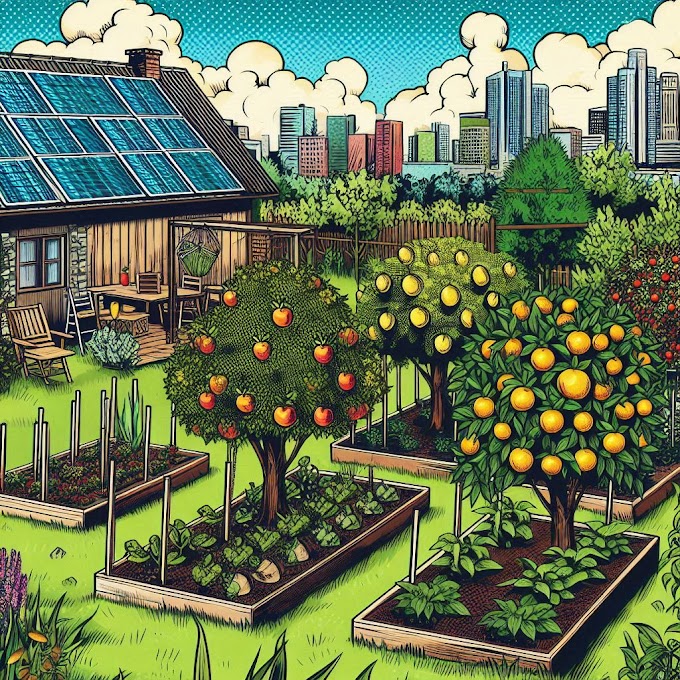Incorporating Fruit Trees into Your Survival Garden Plans: Enhancing Resilience and Self-Sufficiency

Integrating fruit trees into your survival garden plans can significantly enhance the resilience and self-sufficiency of your food production system.
Fruit trees not only provide a sustainable source of fresh, nutrient-rich produce but also offer numerous other benefits, including soil stabilization, habitat creation, and aesthetic enhancement.
Here's why adding fruit trees to your survival garden plans is a wise decision:
1. Nutrient-Rich Harvest:
- Fruit trees yield an abundance of nutrient-rich produce, including vitamins, minerals, antioxidants, and dietary fiber. Incorporating a variety of fruit trees into your garden can provide a diverse array of essential nutrients to support optimal health and well-being.
2. Year-Round Food Supply:
- Fruit trees offer a continuous supply of fresh produce throughout the growing season, providing sustenance for you and your family year-round. By selecting fruit tree varieties with staggered harvest times, you can ensure a consistent and varied supply of fruits from early spring to late fall.
3. Storage and Preservation:
- Many fruits harvested from fruit trees can be stored and preserved for extended periods through methods such as canning, drying, freezing, and fermenting. This allows you to stockpile and preserve surplus fruits for consumption during leaner times or in the event of food shortages.
4. Soil Health and Stability:
- The deep root systems of fruit trees help improve soil structure, enhance nutrient cycling, and prevent soil erosion. By anchoring the soil and increasing organic matter through leaf litter and root turnover, fruit trees contribute to soil health and stability in your garden.
5. Wildlife Habitat:
- Fruit trees attract a variety of beneficial wildlife, including birds, bees, butterflies, and other pollinators. These creatures play essential roles in pollinating flowers, controlling pests, and promoting biodiversity in your garden ecosystem, contributing to its overall health and resilience.
6. Carbon Sequestration:
- Like all trees, fruit trees sequester carbon dioxide from the atmosphere and store it in their biomass, helping mitigate climate change and reduce greenhouse gas emissions. By incorporating fruit trees into your garden, you can contribute to carbon sequestration efforts while enjoying their many benefits.
7. Aesthetic Appeal:
- Fruit trees add beauty, diversity, and visual interest to your garden landscape, enhancing its aesthetic appeal and creating a more inviting and enjoyable outdoor space. From blossoms in spring to colorful foliage in fall, fruit trees provide year-round beauty and charm.
8. Community Resilience:
- Fruit trees contribute to community resilience by providing food security, promoting self-sufficiency, and fostering social connections.
Sharing surplus fruits with neighbors, friends, and local food banks can strengthen community bonds and support those in need during times of crisis.
By incorporating fruit trees into your survival garden plans, you can enjoy a bountiful harvest of fresh, nutrient-rich produce while enhancing the resilience, sustainability, and beauty of your garden ecosystem.
Whether you're planting apple trees for their crisp fruits, citrus trees for their juicy oranges, or fig trees for their sweet figs, fruit trees offer a multitude of benefits for you, your family, and your community.
Tips for Growing Fruit Trees in Your Survival Garden:
- Choose fruit tree varieties that are well-suited to your climate, soil type, and growing conditions.
- Plant fruit trees in locations with full sun exposure, good air circulation, and well-drained soil for optimal growth and fruit production.
- Provide adequate water, nutrients, and care to young fruit trees during their establishment phase to ensure healthy root development and vigorous growth.
- Prune fruit trees regularly to promote airflow, sunlight penetration, and fruit production, and to maintain overall tree health and shape.
- Protect fruit trees from pests, diseases, and adverse weather conditions by implementing appropriate cultural practices, using organic pest control methods, and providing physical barriers or shelters when necessary.













